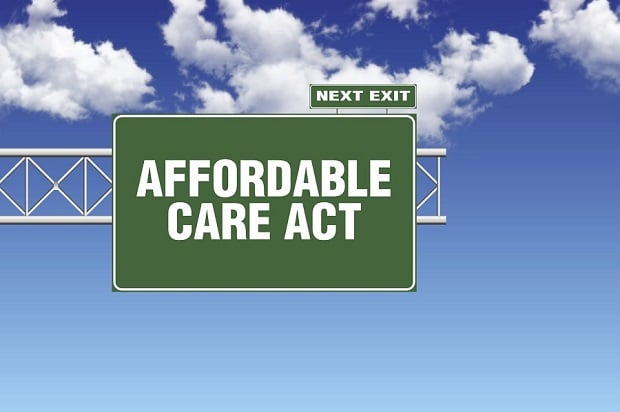Planning to use a physician's services sometime in the next few decades? You might want to make an appointment now. For a variety of reasons, the number of physicians in the United States is rising much more slowly than the demand for their services.
According to the U.S. Department of Health and Human Services, the number of doctors practicing in the United States will increase by just 7 percent between 2008 and 2018. During the same 10 years, the Census Bureau predicts that the number of Americans who are older than 65—the group that requires the most health care—will increase by 36 percent.
By 2020, says the Association of American Medical Colleges' Center for Workforce Studies, the U.S. will have 45,000 too few primary care physicians and 46,000 too few surgeons and medical specialists.
"The physician shortage is very real," says Lori Brostrom, vice president of marketing for Physician Wellness Services, a division of Workplace Behavioral Solutions Inc., both based in Minneapolis. The shortage, she says, is driven by a combination of factors, from trends in medical education and practice to overall demographic changes—and it may affect the price and availability of health care.

Several factors
As physicians get more difficult to find, demand for their services is on the rise. "We see record numbers of baby boomers entering the Medicare program as they turn 65," says Christiane Mitchell, director of federal affairs at the Association of American Medical Colleges in Washington, D.C. "When you hit 65 years old, your health care needs soar. These people are getting older and living longer."
The shortage isn't a uniform one. Some people, both older and younger, will find it easier to find the care they need simply by virtue of their medical needs and geographic locations. The physician shortfall is greater in primary care specialties and in rural and underserved markets—and attempts to fix the problem will have to take that into account.
"I think that the question of whether there is a physician shortage sets up the wrong conversation. What matters most to patients and the population is whether they have the doctors they most need, readily available to them," says Scott Shipman, director of primary care affairs and workforce analysis at the Association of American Medical Colleges in Washington, D.C, and assistant professor of pediatrics and health policy at the Geisel School of Medicine at Dartmouth College in Hanover, New Hampshire.
There are areas with physician shortages and areas without physician shortages, Shipman says, as well as medical specialties that are under- or oversubscribed. Where your area and medical need falls on those curves can make all the difference.
"The generalist specialties—those physician specialties where there is a lower degree of sub-specialization—are in short supply. That includes primary care, family medicine and internal medicine, but not necessarily general pediatrics, which has had fewer problems maintaining numbers," Shipman says.
Beyond that, he adds, the United States has a shortage of generalists, from general surgeons to general neurologists. "People are getting more and more specialized. By definition, that comes with a narrower scope of expertise and more predictable hours. Lifestyle increasingly matters to new physicians, and the draw of the sub-specialties has been strong," Shipman says.
Subspecialties also pay more than generalist fields do, because of the way the payment system has evolved.
David Cornett, a senior executive and vice president at Cejka Search, a physician recruitment and retention firm based in St. Louis, says it's relatively easy to recruit medical specialists and sub-specialists. It's more challenging to find generalists. "In terms of what we recruit, the top five in-demand specialties are internal medicine, family medicine, general surgery, orthopedic surgery and neurology," he says.

Geography plays role
"There has been a longstanding challenge around getting doctors to rural and poorer areas. These are some of the most severe areas of shortage," Shipman says. "Urban poor areas also have deficits, relative to non-poor urban and suburban areas."
The rural population is shrinking overall, but the number of rural doctors is shrinking faster, Shipman says. With the exception of doctors who grew up in rural places—who ofte
n do want to practice in less populated areas—most new physicians prefer to live and work in larger towns and cities.
Rural doctors often work longer hours than their more urban counterparts, usually because there are fewer medical professionals who can cover for them, says Beth Berendt, principal consultant at Berendt and Associates, which consults with health care providers from its base in Olympia, Washington. Living in a more populated area also makes it easier for doctors' spouses to find jobs.
"Schools in cities also tend to be better, because cities can pass levies to create additional funding for schools," Berendt says.
Shipman also cites medical school demographics as affecting the doctor supply. Over time, students whose families are in the highest socioeconomic bracket have made up an increasingly large proportion of medical school matriculates, he says. Those students are the least likely to go into primary care, perhaps from a desire to do better than their parents, or because specialties and subspecialties tend to carry higher prestige than general medicine does.
Physicians Leaving
The problem isn't only on the supply side. "According to American Medical Association data, 47.4 percent of doctors are over the age of 50," Cornett says. "We know that the phy
sician workforce is aging."
Turnover dipped during the worst part of the recent recession, Cornett says. "People couldn't sell their home, move or retire because their funds had been hit so hard." But retirement rates for 2013 are up 50 percent over 2012 numbers. In 2012 and 2013, overall physician turnover was 6.8 percent—the highest rates since Cejka began tracking the numbers in 2004.
A growing number of younger doctors also are leaving the profession. "We're finding that rates of stress and burnout are increasing dramatically, and that's pushing doctors toward either retirement or staying in medicine, but getting out of clinical practice," Brostrom says. "They're taking administrative roles or going into private industry in life science or medical technology."
Supply Remains Static
Despite the growing demand, the number of slots for medical school students has been largely static for many years.
"Some new medical schools have opened in the past few years, but it takes a bunch of time to get a class through," Brostrom says. "It's not going to have an immediate impact."
Residencies, also, are too few for the number of medical school graduates who need them.
"It's an increasingly difficult game of musical chairs," Mitchell says. "We're seeing 400 to 500 students each year, for the past few years, who haven't been able to match."
Hospitals and the federal government together fund medical residencies, and the federal government capped its contribution in 1997 as part of the Balanced Budget Act.
"They haven't changed that level of support since," Mitchell says. "The battle in Washington is to convince Congress that they need to either increase the cap or get rid of it entirely.
But just increasing the number of doctors won't fix the problem, Shipman says.
"There is little evidence—in fact, there is evidence refuting the notion—that one can affect specialty and geographic shortages by training more doctors in the aggregate," he says. "When you train more physicians without targeting the training, you get more doctors in the areas and specialties that already have lots of doctors. There's a natural end point to that. You can have areas and specialties that are saturated. But that happens only at the very extremes of supply. Training more is an inefficient way of solving shortages. We need to think about how to get doctors into the areas and specialties where they are most needed."
Complete your profile to continue reading and get FREE access to BenefitsPRO, part of your ALM digital membership.
Your access to unlimited BenefitsPRO content isn’t changing.
Once you are an ALM digital member, you’ll receive:
- Breaking benefits news and analysis, on-site and via our newsletters and custom alerts
- Educational webcasts, white papers, and ebooks from industry thought leaders
- Critical converage of the property casualty insurance and financial advisory markets on our other ALM sites, PropertyCasualty360 and ThinkAdvisor
Already have an account? Sign In Now
© 2024 ALM Global, LLC, All Rights Reserved. Request academic re-use from www.copyright.com. All other uses, submit a request to [email protected]. For more information visit Asset & Logo Licensing.








